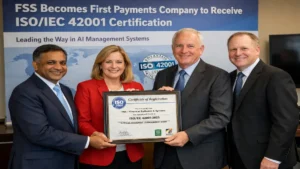India’s economic landscape has witnessed a significant transformation over the past few decades, marked by a notable decline in the share of agriculture in the Gross Domestic Product (GDP). According to recent government data, the share of agriculture in India’s GDP dropped from 35% in the fiscal year 1990-91 to 15% in 2022-23. This shift can be attributed to the rapid growth experienced by the industrial and service sectors during this period.
Factors Behind the Decline: A Focus on Industrial and Service Sectors
Union Agriculture Minister Arjun Munda, in a written reply to Lok Sabha, shed light on the factors contributing to this decline. He emphasized that the decrease in the share of agriculture in the Gross Value Added (GVA) of the economy is not a result of a reduction in agricultural GVA but rather stems from the remarkable expansion of the industrial and service sector GVAs.
Global Context: Aligning with International Trends
Munda further contextualized the situation by noting that the decline in the share of agriculture in GDP aligns with global trends. Drawing a parallel with international experiences, he highlighted that the share of agriculture in the world’s GDP has also dwindled over the decades and currently stands at around 4% in recent years.
Agricultural Growth Amidst Economic Shifts
Despite the declining share in GDP, the agricultural and allied sector has demonstrated resilience, registering an average annual growth of 4% over the last five years. This indicates that while agriculture’s contribution to the overall economy may be diminishing proportionately, the sector is still experiencing positive growth.
Government Initiatives: Nurturing Agricultural Prosperity
In response to the changing dynamics, the government has implemented a series of developmental programs, schemes, and reforms aimed at enhancing agricultural productivity, resource use efficiency, and sustainability. Minister Munda highlighted these initiatives, emphasizing the government’s commitment to ensuring remunerative prices for farmers and strengthening agricultural infrastructure.
PM-KISAN Scheme: A Beacon of Support
One significant initiative is the Pradhan Mantri Kisan Samman Nidhi (PM-KISAN) scheme, launched in 2019. This income support program provides Rs 6,000 annually to eligible farmers in three equal installments. Minister Munda proudly stated that, as of November 30, 2023, more than Rs 2.81 lakh crore has been disbursed to over 11 crore farmers under this scheme.
Summary
- Declining Share in GDP: India’s agriculture’s contribution to GDP has dropped from 35% in 1990-91 to 15% in 2022-23 due to rapid growth in the industrial and service sectors.
- Industrial and Service Sector Growth: The decline is attributed to the expansion of industrial and service sector Gross Value Added (GVA), rather than a reduction in agricultural GVA.
- Resilient Agricultural Growth: Despite the decline in its GDP share, the agricultural and allied sector has demonstrated an average annual growth of 4% over the last five years.
- Government Commitment: The government’s proactive measures, including the PM-KISAN scheme, underscore its commitment to supporting farmers and ensuring a resilient and prosperous agricultural sector in the evolving Indian economy.
- PM-KISAN Scheme: Launched in 2019, the Pradhan Mantri Kisan Samman Nidhi (PM-KISAN) scheme provides Rs 6,000 annually to eligible farmers in three equal installments.
- Significant Disbursement: As of November 30, 2023, over Rs 2.81 lakh crore has been disbursed to more than 11 crore farmers under the PM-KISAN scheme.




 FSS Becomes First Payments Company to Re...
FSS Becomes First Payments Company to Re...
 Google Now Lets Users Change Primary Gma...
Google Now Lets Users Change Primary Gma...
 India Clears Two New Airlines as Aviatio...
India Clears Two New Airlines as Aviatio...







